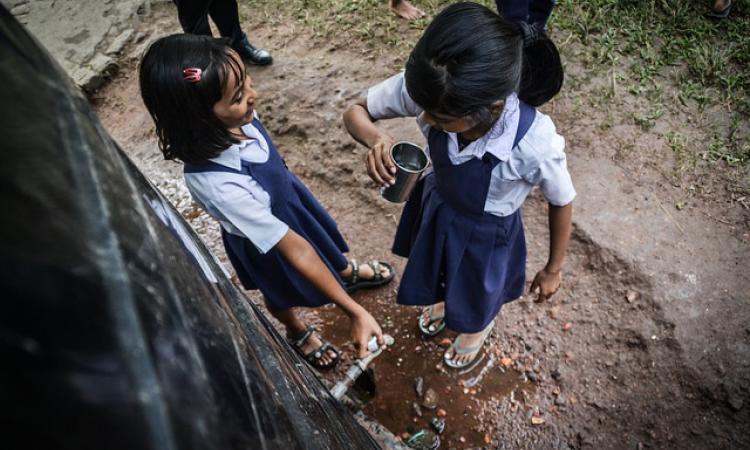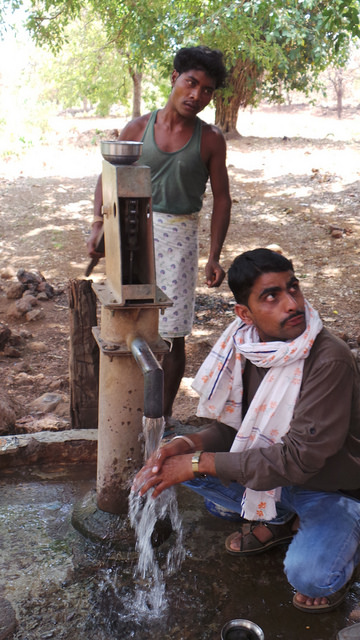
On March 16, 2017, the Comptroller and Auditor General (CAG) of India began a performance audit of the National Rural Drinking Water Programme (NRDWP) by discussing with the Ministry of Drinking Water and Sanitation the scope and methodology of the performance audit. Records relating to the implementation of the programme in 27 states for the five-year period (2012 to 2017) were examined. The performance audit report for India got tabled in the Parliament on August 7, 2018.
In this article, we choose Odisha state to present the performance audit findings contained in a recently tabled CAG audit report on Odisha (General and Social Sector) for the year ending March 31, 2017 (see pages 88-99).
A CAG audit that was tabled on September 20 in the state Assembly points to the ineffective implementation of the NRDWP in Odisha. Audit findings indicate that due priority was not given to the least covered and quality affected habitations, though required as per the NRDWP guidelines. The performance review of the implementation of this centrally-sponsored schemes for the five-year period (2012-2017) also revealed that the data relating to the coverage of habitations, the habitation-wise quantum of water supply and existence of facilities was distorted.
Targets fixed under the Strategic Plan to be achieved by 2017 were not achieved and water quality monitoring and surveillance were inadequate, stated the CAG audit. As per the department’s database, 1809 habitations having a population of 5.22 lakh were receiving chemically contaminated water as of May 2017, stated the CAG report.
Faulty fund management by the state
Audit scrutiny brought out inefficient funds management and instances of delay in the release of the state’s component by the Government of Odisha. Auditors also criticised low utilisation of funds due to the slow pace of execution of works. Auditors also indicted the state for failing to transfer O&M (Operation and Maintenance) funds to Panchayati Raj Institutions (PRI), although the O&M of water supply schemes was being managed by PRIs since October 2006. In September 2017, in a reply on this audit objection, the state government stated that funds were not transferred to PRIs due to lack of manpower and expertise at the panchayat level!
The CAG auditors found that the department had undertaken digging of tube wells without conducting proper scientific surveys, which led to dry wells thereby depriving habitations of drinking water and expenditure incurred on them becoming wasteful.
Deficiencies in planning
Performance audit revealed several deficiencies in the planning stage. While Annual Action Plans (AAP) were prepared by the department, the scrutiny of these plans brought out a shocking fact that AAPs didn’t include the ongoing works. As a consequence, a schedule for completion of ongoing works was not prepared, which led to the delay in the completion of works.
While the NRDWP envisaged the preparation of Village Water Security Plan (VWSP) and District Water Security Plan (DWSP), the CAG auditors noticed that in the test checked districts (eight out of 30 districts), neither VWSP nor DWSP got prepared. The department had also failed to prepare five-year Comprehensive Water Security Action Plan to ensure all time availability of water to all.
There were also instances of deviations from the programme guidelines framed by the central government. While the guidelines expected prioritisation of habitations where 0-50 percent population was in receipt of fewer than 40 litres per capita per day (lpcd) water, performance audit revealed that department had not prioritised implementation of rural water supply schemes in 5446 habitations of the State, wherein 0-50 percent of the population received less than 40 LPCD water as of April 2017.
In reply to this audit observation, Odisha government stated in October 2017 that “the state had adopted the strategy of covering all gram panchayats and highest populous villages and therefore they couldn’t prioritise those habitations”. The CAG auditors state that the reply confirmed the fact that the state government had deviated from the programme guidelines.
Deficiencies in water quality monitoring and surveillance
As per the Uniform Drinking Water Quality Monitoring Protocol issued by the Union Ministry of Drinking Water and Sanitation in February 2013, annual analysis load for each district and sub-district level water quality monitoring laboratory was 3000 water samples. Considering the workload specified in the protocol, Odisha required 317 laboratories for 9.5 lakh water sources. As against this, CAG auditors found only 77 laboratories in the state.
The protocol also expected the laboratories at all levels strive to get National Accreditation Board for Testing and Calibration Laboratories (NABL) accreditation in a phased manner. Audit scrutiny showed that only state-level laboratory could obtain NABL accreditation. Odisha State Water Security Mission (OSWSM) had not taken any steps to obtain NABL accreditation for the remaining 76 district and sub-district level laboratories.
The audit scrutiny also led to a shocking revelation that divisional officers failed to test water samples for at least 13 basic water quality parameters as envisaged in the protocol. Audit scrutiny of the records of districts and sub-districts laboratories showed that they were testing water samples only for iron, fluoride, chloride, pH and hardness; they were not carrying out tests for other mandatory parameters such as nitrate, arsenic, alkalinity etc.
This is all the more shocking in the background of a Central Ground Water Board (CGWB) report that found 28 out of 30 districts as contaminated with nitrates (i.e. having more than 45 mg/litre)!
Out of 26 laboratories test checked in the audit, 13 were found to be functioning with only one staff, 10 laboratories were found to be functioning with only two staff and the remaining three were functioning with only three staff, as against the requirement of eight staff members as per protocol. The audit scrutiny also found that no microbiologist/ bacteriologist was posted in any of the laboratories and no chemists were posted in eight laboratories, out of 26 test checked during the audit in eight districts.
Test check of records in six selected divisions and information furnished to audit also revealed significant shortfall in the infrastructure. The shortfall in equipment, glassware and chemicals ranged between 28 and 95 percent in 26 districts/sub-districts level laboratories.
Social audits not conducted
The NRDWP guidelines expected that there should be a social audit every six months, on a fixed date by the community-based organisation in order to ensure that the works undertaken by the Public Health Engineering Department (PHED) and PRIs were as per the specification and funds utilised were proper. The audit scrutiny revealed that the Panchayati Raj and the drinking water department had not made any arrangements for conducting social audits during 2012-17. As a result, there was no community-based assessment of the quality and quantity of water provided to habitations, hours of supply and distances covered by people to collect drinking water. During a conference held at the end of the performance audit (i.e. September 2017), joint secretary, PR&DW department assured that steps would be taken for conducting social audits.
While the scheme guidelines required that the State Level Scheme Sanctioning Committee shall meet at least twice a year, performance review revealed that the SLSSC meetings were held only once during 2012-’13, 2015-’16 and 2016-’17 and twice during the years 2013-’14 and 2014-’15.
As per the NRDWP guidelines, State Technical Agency (STA) was to ensure that rural water supply schemes were well designed and cost effective by undertaking an in-depth scrutiny of Detailed Project Reports, performance review pointed out that the divisional offices had failed to send DPRs and estimates of Piped Water Supply Schemes to STA for scrutiny. Auditors also found that divisional office in Keonjhar had sent only the design of overhead tanks at post tender stage, which resulted in the delay in the completion of four works in Keonjhar division by 21 to 32 months.
The author is a faculty at Azim Premji University.
Disclaimer: The views and opinions expressed in this article are those of the author/s and do not necessarily reflect the policy or position of India Water Portal.
Also read NRDWP implementation in Rajasthan.